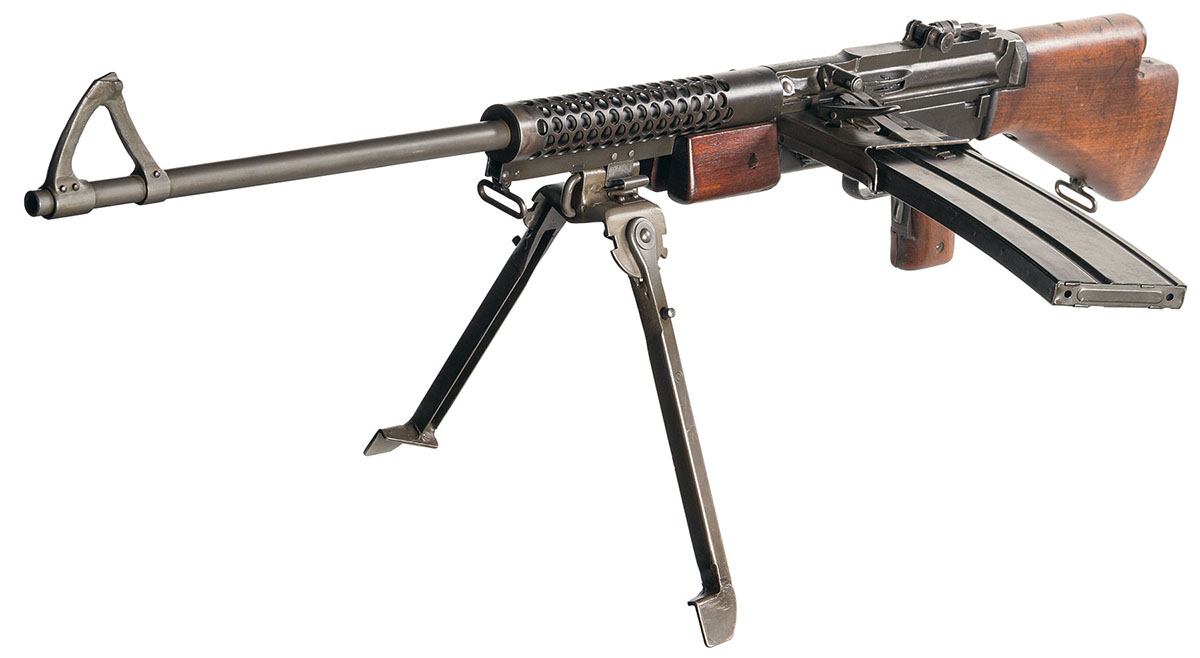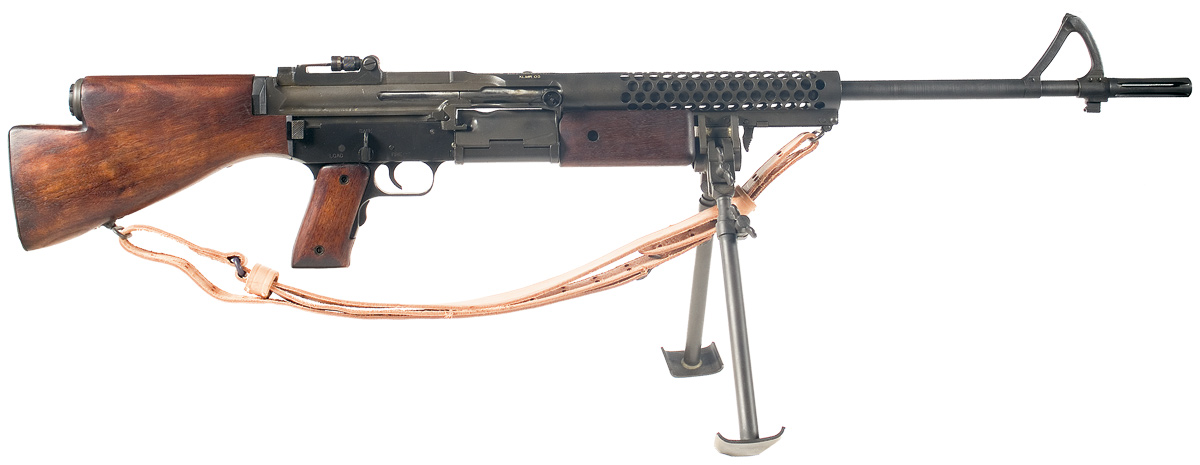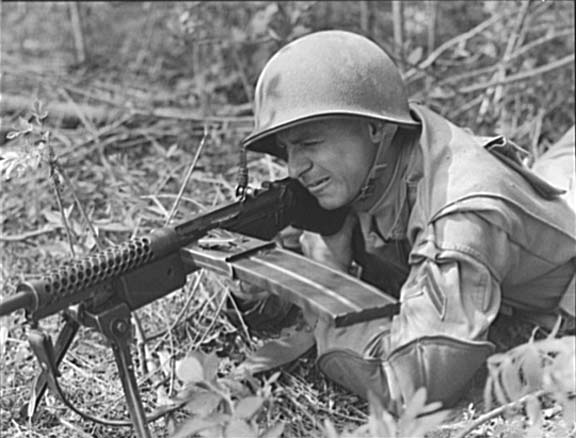Today is the 33rd anniversary of the creation of the US Special Operations Command (USSOCOM). The Army Special Operations Forces (ARSOF) component of SOCOM traces its lineage back much further however – all the way back to the early years of WWII in fact. And today’s Throwback Thursday takes a look at a special weapon that provided those forces with mobile automatic fire support – the M-41 Johnson Light Machine Gun.

Boston lawyer, and Marine Corps Reserve Captain, Melvin M. Johnson, Jr. wanted to build a semi-automatic rifle that would outperform the M1 the Army had adopted. By late 1937, he had designed, built, and successfully tested both a semi-automatic rifle and a prototype light machine gun. Each shared a significant number of physical characteristics and common parts, and both operated on the principle of short recoil with a rotating bolt.
He took the parts of other guns, switched them out and came up the M1941 light machine gun. Manufactured in Rhode Island, the M1941 light machine gun, popularly known as the ‘Johnny Gun,’ represented a unique moment in time when U.S. Army Special Operations Forces were able to influence the development of weapons for field use. Designed as a prototype light machine gun to compete with the M1918A3 Browning Automatic Rifle (BAR), the M1941 LMG sought to outperform the BAR, particularly in the assault role.
Like the BAR, the Johnny Gun was chambered in the .30-06 Springfield round, making it ammo-compatible with the widely used M1 rifle. At about the same time, the First Special Service Force, the forerunner of U.S. Army Special Forces, was looking for a versatile light machine gun. The M1941 Johnson Machine gun seemed to be a perfect fit for the Force. The Johnson was also used extensively by USMC Raider and Parachute Battalions in WWII.

The Johnson’s rate of fire was adjustable by the gunner from 200 to 600 rounds per minute cyclic rate, and was fed from the operator’s left by use of a curved, single-column, 20-round detachable box magazine. A unique feature was its ability to be ‘topped off’ quickly without removing the magazine simply by inserting rounds with stripper clips into the ejection port or by feeding single rounds into the breech. Drawbacks of the Johnson’s magazine design however were that it was more susceptible to damage than the BAR’s shorter-length, double-stack magazine. The extended length of the magazine also made the weapon more awkward to carry, and also unbalanced the weapon to the left.

In the assault fire mode the lighter weapon was more maneuverable than the BAR, allowing for heavy, accurate volumes of fire to support attacking forces. The Johnson LMGs were particularly popular with the gunners of the First Special Service Force, however due to the low numbers produced, as their Johnson’s got damaged or worn out the FSSF gunners replaced them with BARs.
The Johnson’s rotating bolt system allowed it to operate with a favorable short recoil cycle. Johnson also designed the layout of the weapon to provide a straight-line recoil impulse to the shoulder of the gunner, helping to reduce “kick” and thereby greatly aiding combat marksmanship. The straight line recoil impulse design was later used by Eugene Stoner in designing his famous AR-10 and AR-15 rifles that laid the groundwork for the M16/M4 series that continue to serve today. Interestingly, Johnson himself later worked as an advocate to the US Government for the AR-15 rifle design on behalf of Colt and ArmaLite.
For more information on the FSSF, as well as the Johnny Gun, please visit: https://www.arsof-history.org/first_special_…/beginning.html
Photo credits: Wikipedia and ARSOF-History.org